Cucumber is a popular vegetable; it can be found in any garden. It can be planted in different ways, even by seeds, but in order for the plants to begin to bear fruit earlier, seedlings are grown. It is worth remembering that it is quite tender and fragile, and you need to properly create the conditions for its normal development.
With improper care, you get upward, thin, weak stems instead of strong short bushes. They are not only ugly, but there is little hope for a harvest from such plants. There may be several reasons why the seedlings of cucumbers are very long, and what to do to get viable seedlings nevertheless depends on what kind of cultivation mistakes were made.
Content
Why did the seedlings of cucumbers stretch out on the window or in the greenhouse
Many gardeners begin to plant seedlings early, seeking to approximate harvest time. But if the seedlings were weak, it turns out the opposite, such plants adapt for a long time to new conditions after transplantation.
Pulling the stem is not a disaster, but if the plant has responded to the conditions of detention, measures must be taken so that it does not die. The most common causes are:
- violation of the ratio of light and temperature;
- improper watering is often plentiful. In many gardeners, young seedlings of cucumber suffer from overflow;
- Also, the case may be in small pots, in which the root system becomes crowded and it cannot develop normally.
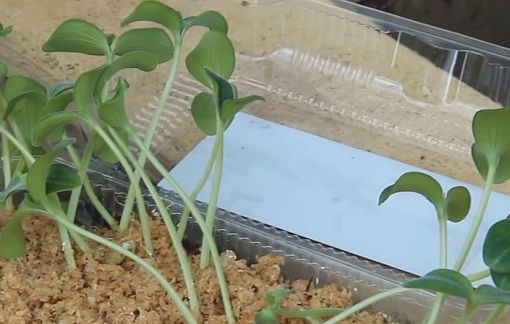
Choose neutral mixtures, because alkaline and acid adversely affect the plant: bacteria useful for seedling growth do not develop in this soil. Also in acidic soils, iron, aluminum and phosphorus toxic to plants accumulate.
Of course, it also happens that several reasons at once affected the incorrect formation of seedlings, and if there is no way to change all the conditions, you should not be upset - and such seedlings can be planted.
What to do if seedlings are extended
First of all, the problem of stretching can be solved by changing the temperature and lighting. Windows located on the south side are the best sources of light. If the plants "live" on another window and the sun is not enough for them, then you can attach a special foil that will reflect light on the sprouts. If the leaves on the plants are too large, it may be sufficient to set the flowerpots down so that they do not obscure each other's leaves.
As for additional lighting, it should be borne in mind that the light beam has multi-colored spectra. And knowing their properties, the most suitable lamps with a certain light are selected. The blue spectrum stimulates the division of stem cells and therefore prevents the extension of seedlings.
Red mainly affects the condition of the root, its growth, branching, as well as the flowering and early ripening of fruits. Therefore, when choosing special lamps, all this must be taken into account. Thus, for elongated seedlings, lamps with a blue spectrum are suitable, for example, fluorescent, LED, multispectral.
Do not forget that, like any other healthy culture, a cucumber needs adequate nutrition. Not always does he get all the useful trace elements from the soil, so he needs to be fed. There are several types of top dressing, depending on the method of administration, distinguish between root and root, and depending on the composition - mineral and organic.
Root dressing is suitable for summer time, because it is in the warm season that the root can normally absorb nutrients and not accumulate excessive moisture. Foliar top dressing is suitable for any season. It is best to take urea or a solution of ammonium nitrate. The solution is prepared in a ratio of 5 g per 1 liter of water.
You can use the pinching method or the so-called tweezers of cucumbers. This is the removal of the top of the shoot of a young cucumber. The method is used so that seedlings do not grow in height, but develop lateral parts, which subsequently, in fact, bear fruit.
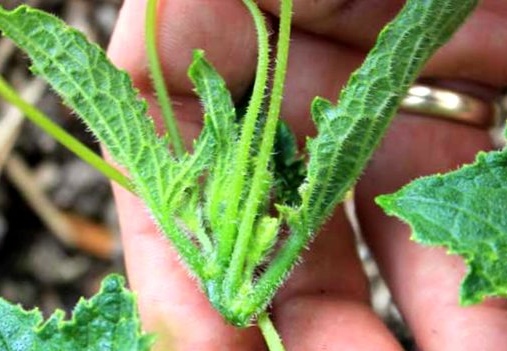
Sharp scissors or secateurs cut off the top of the stem above 6 sheets. On the plant, lateral shoots form over time, which in the future should also be pinched over the third or fourth leaf.
How to plant in the soil stretched seedlings of cucumbers
Transplanting such cucumber seedlings to a permanent place requires compliance with certain rules.
In open ground
If the seedlings are weak, it is very easy to damage, so you need to do everything slowly and carefully. You need to handle the leaves very carefully, as they are very delicate. If everything is done correctly, then the sprouts will quickly master in the new environment, take root well and continue to grow and develop.
- The soil must be prepared in advance. You can enrich it with different fertilizers or ash. Do not forget about the temperature, the soil should be warmed up.
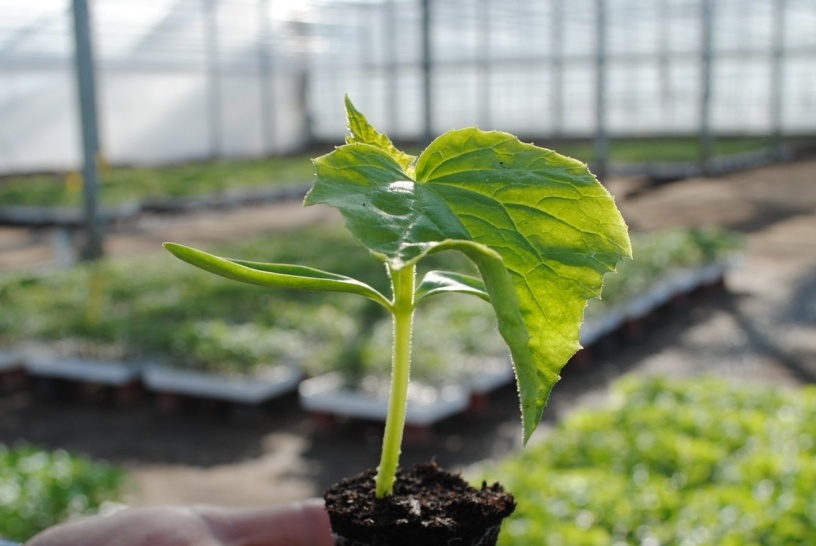
To prevent plant stress, pour warm water on the ground, so adaptation to new conditions will begin faster. - Planting plants in the ground is preferable in the morning or evening. Watering is carried out only with heated water, as an option - left in metal buckets in the sun. Do not use cold water, it impedes development, delays adaptation and growth.
The most affordable and convenient is considered to be a deepening method. It consists in the fact that the sprout is laid sideways or twisted in a spiral along the width of the hole. It is not necessary to plant the root too deep, just place it to a depth of 5-7 cm. After the root is submerged, sprinkle the seedling with loose earth and leave it alone.
You can also apply this method: lower the sprout into the hole, and sprinkle it on top with soil, leave a small indentation around the stem in the form of a funnel. This is done so that during further irrigation, moisture evenly flows to the root.
Also for this purpose there is a covering material with holes, but it must be put before transplanting seedlings into the soil. Please note that the soil must be carefully prepared, it must be loose, warm, and moderately moist. Sawdust and ash, as well as a remedy for the bear, can be put on the bottom of the hole as fertilizer.
To the greenhouse
The greenhouse requires preparation. It should be clean, the soil in it should be treated, always disinfected and fertilized. In no case should you create a risk of infection of the seedlings with any disease - it is already weak. Before replanting seedlings, the earth should be carefully dug up and moistened. Be sure to comply with certain conditions in the greenhouse.
For example, the optimum temperature for planting plants is not lower than 10 degrees, otherwise the plants will simply die from the cold.In no case do not allow drafts, as well as direct sunlight under the sprouts.
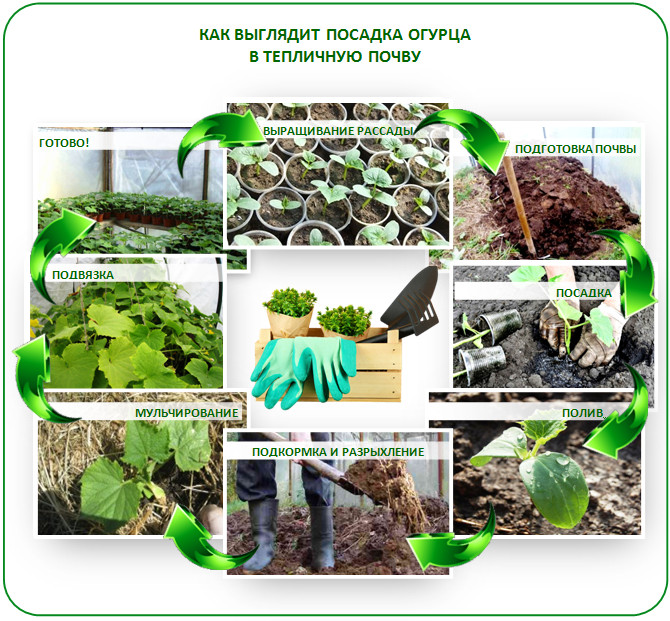
For transplanting elongated seedlings into a greenhouse, the same methods are used as in open ground - holes or the method of deepening.
Prevention methods
To prevent the incorrect formation of seedlings of cucumbers, it is worth creating the most favorable conditions for her.
Temperature adjustment
Cucumber is a heat-loving plant, for normal growth and development, it needs the right microclimate. The culture develops well at a temperature of:
- in the afternoon - from 24 ° C to 30 ° C;
- at night - from 16 ° C to 18 ° C.
It is thanks to the temperature that shoots develop, and the root also grows.
Cucumber is very picky about changes in temperature conditions, when the temperature drops to 10 ° C, the plant can hibernate. Moreover, it “starves”, because the root ceases to normally absorb moisture and minerals. Low temperature leads to irreversible changes in living tissues.
At an ambient temperature of 3 ° C, three days is enough for the culture to die. Excessive heat also negatively affects development. Most often this is manifested in the death of leaves, but may be due to infertility of pollen. Therefore, avoid critical drops or rises in temperature.
Lighting adjustment
For the normal development of any plant, good lighting is necessary, especially such photophilous as cucumber. It is the wrong light - this is the most common reason for drawing seedlings.
If natural lighting is not enough or there is no access to it, then it is quite realistic to create artificial lighting. The main thing is to consider that in sunlight there are a lot of blue rays, which are useful for seedlings. Therefore, do not use ordinary incandescent lamps for additional lighting, as they do not contain these rays. In such lamps, powerful thermal and infrared rays, which, on the contrary, interfere with normal photosynthesis.
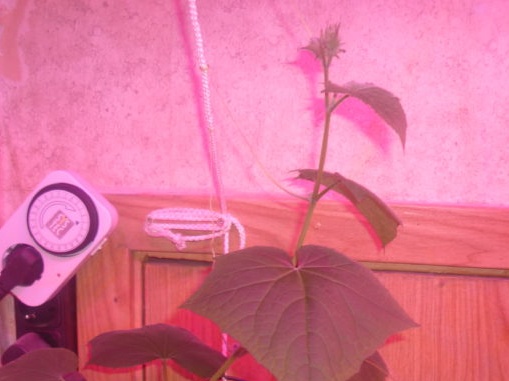
They very well eliminate the lack of lighting and are relatively economical. Cucumber seedlings respond well to lighting with these devices and give good growth. But due to the fact that the light of the lamps has a lilac-pink color, they are not suitable for growing, for example in an apartment, because they will bother the eyes of the owners. To use them, you need specially equipped rooms or rooms where people are rare.
The most effective at the moment are considered sodium arc lamps: DNaT, DNaZ and Reflax. Unlike phytolamps, their light is orange-yellow, which is not so irritating to the human eye. One more positive point is that the intensity of illumination of sodium lamps fully covers all the needs of plants. It is also very convenient that they are economical and one sodium lamp is enough for a meter and a half windowsill.
Soil increase and top dressing
The cucumber has a shallow root system, and most of the nutrients it receives from the surface layers of the soil. In this regard, it must be periodically fed. Feeding is advisable to start only when the first real leaf appears. Previously, this makes no sense - the seeds do not absorb nutrients.
You need to feed cucumbers no more than three times before planting in open ground or a greenhouse, but if the seedlings are weak, then you can add another 1-2 procedures. The very first feeding is carried out with organic matter (possible with the addition of minerals):
- manure diluted with water 1: 1;
- superphosphate - 20 g.
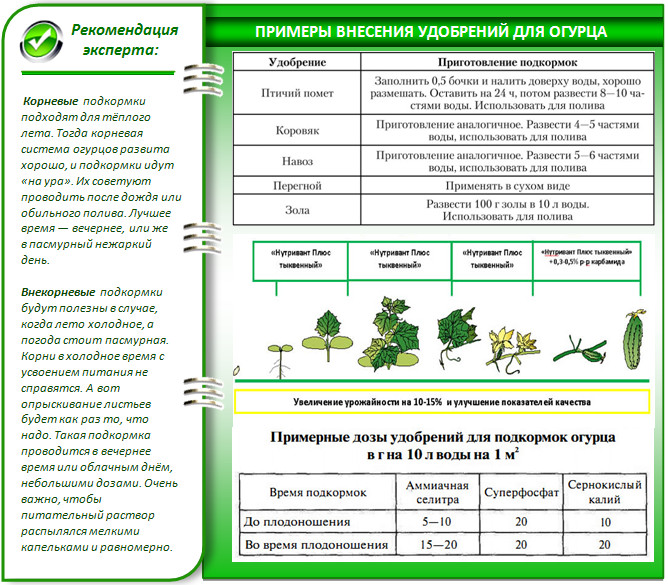
If there is no organic matter, then you can make such a mixture:
- ammonium nitrate - 7 g;
- superphosphate - 15 g;
- potassium sulfate - 8 g;
- water - 10 l.
Ready mixes are also suitable - Humate potassium (sodium), Effekton and the like. For the second and third feeding, the amount of mineral substances needs to be increased - approximately twice.You can also add spraying solutions with trace elements.
Due to the shallow location of the roots of the cucumber, as the seedlings grow, you can add soil to the container with it. This will enable the plant to build up the root system and green mass.
Planting cucumbers
Seedlings need to be planted in case seedlings appear heaped and prevent each other from developing fully. This is also done if the capacity is too small and crowded.
The seating algorithm is simple: we prepare clean dishes, we disinfect the soil for transplanting. We carefully remove the seedlings from the old container and separate the stems from each other. We do everything very carefully so as not to damage the plants and their roots. In each cup we plant one seedling, we fill it with prepared soil. If the soil is dry, you can pour a little warm water. Next, we follow all the rules of care.
Common questions
Any living plant requires good care. And the quantity of the crop and, in general, its availability also depend on how correctly the seedlings were grown. Therefore, you should study all the rules of agricultural technology of cucumber seedlings in order to prevent annoying mistakes.

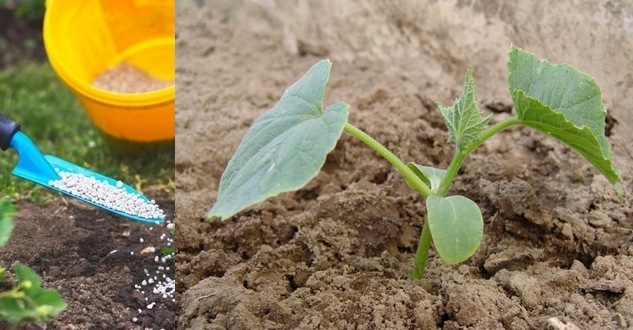
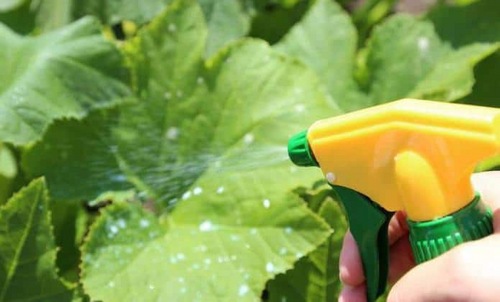
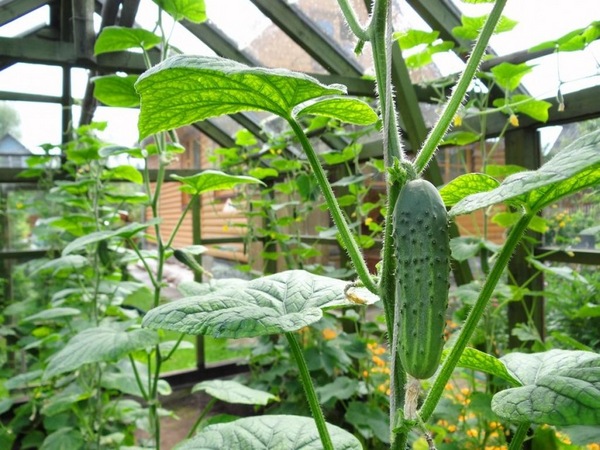
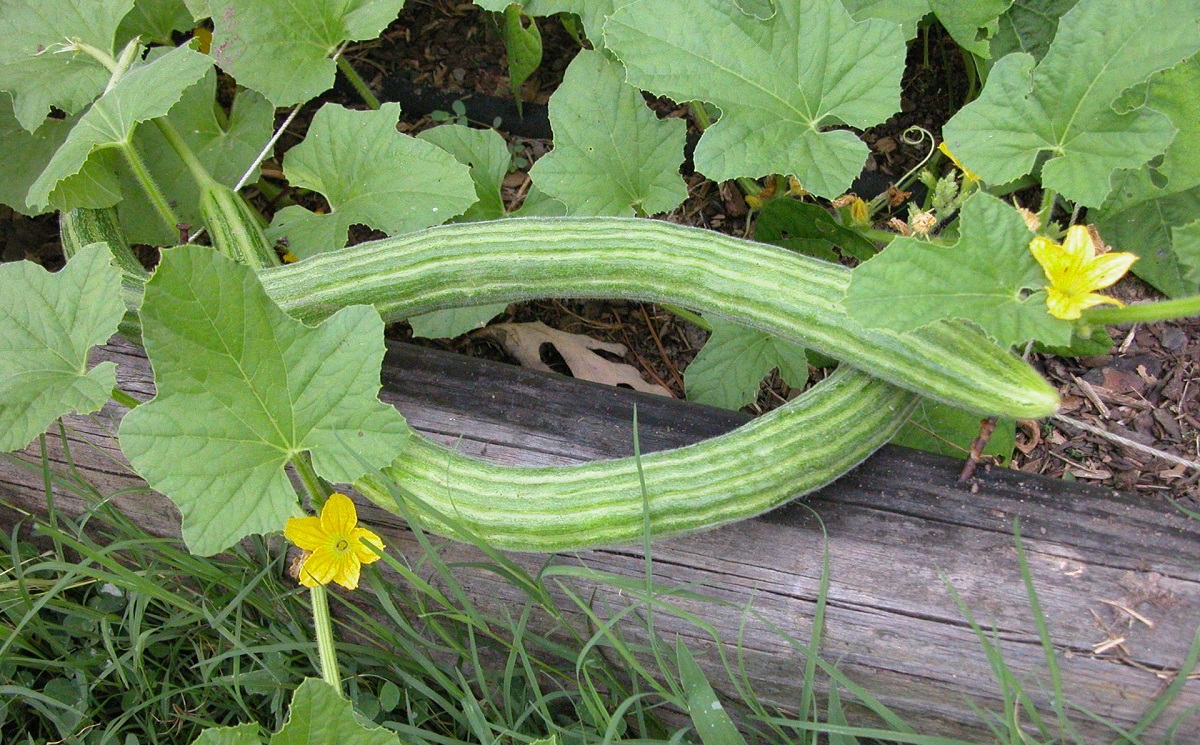 Armenian cucumber with melon flavor: description and characteristics, reviews
Armenian cucumber with melon flavor: description and characteristics, reviews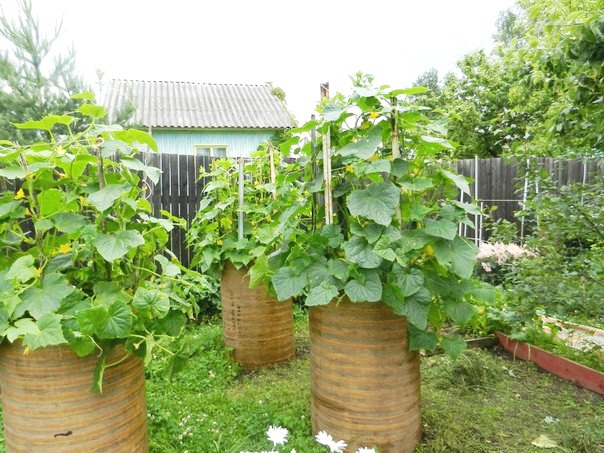 Do-it-yourself vertical beds for cucumbers: schemes, photos
Do-it-yourself vertical beds for cucumbers: schemes, photos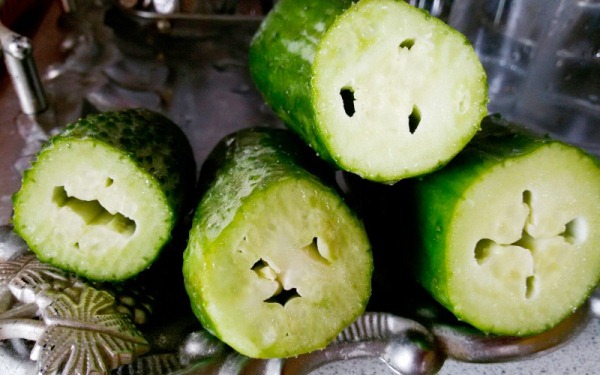 Hollow cucumbers: reasons for the appearance of hollow, what to do
Hollow cucumbers: reasons for the appearance of hollow, what to do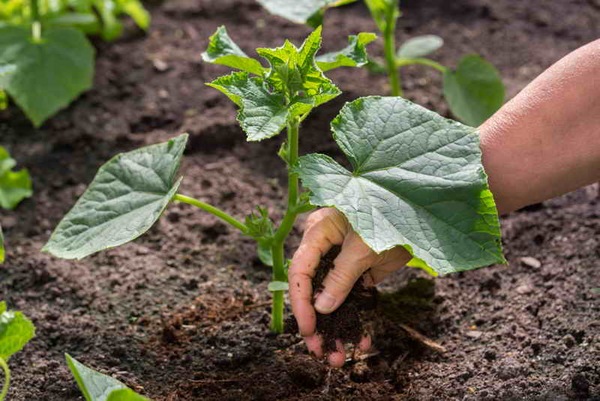 Which manure is best for cucumbers: application, how to breed
Which manure is best for cucumbers: application, how to breed